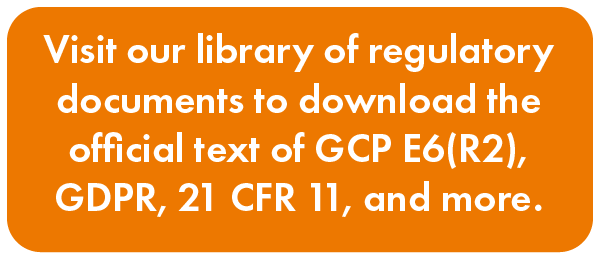
That’s not a word anyone involved in clinical research takes lightly, with lives and knowledge on the line. But by issuing guidance on EHR integration in July, followed this month by guidance on simultaneous cohorts in Phase I oncology trials, the United States’ foremost regulatory body is placing a premium on efficiency. It’s not fair, or accurate, to claim that the policymakers at the FDA have never been interested getting safe, effective medicines to market quickly. Like the population they serve, these policymakers are moms and dads, brothers and sisters, and patients. But they are also stalwarts of caution. That’s why their recent guidance communicates so much, even beyond its content.
First, what is the content? July’s guidance document, Use of Electronic Health Record Data in Clinical Investigations, “clarifies [the] FDA’s expectations when EHRs are used as a source of data in [prospective] clinical investigations.” Unabashedly, the guidance “encourages sponsors and clinical investigators to work with entities that control EHR systems, such as health care organizations, to use EHR and EDC systems that are interoperable or fully integrated.” (The guidance defines interoperable systems as those capable of piping data from one to the other through a validated process. Think of a well-tested and well-documented API. Fully integrated systems, by contrast, “allow clinical investigators to enter research data directly into the EHR.”) Guidance sections with the most specific recommendations include those on:
- structured and unstructured data (the first being preferred, but the second allowed if additional reliability and quality measures are in place)
- validation (required for the EDC, but not for the EHR)
- data from multiple EHR systems (“data from another institution’s EHR system may be used and transmitted to the sponsor’s EDC system provided that data sharing agreements are in place”)
- ONC Health IT Certification for EHR system (“FDA encourages the use of such certified EHR systems”)
- data custody and audit trails
- maintaining the blind across all relevant systems
- Informed Consent that makes the use of EHR data clear
The recommendations are sound, if not surprising. But the scope, which includes prospective studies but excludes postmarketing and registry ones, signals a focus on investigations designed to make new therapies available, or existing therapies available for new indications. A need, in other words, for speed.
What about the August guidance? Expansion Cohorts: Use in First-In-Human Clinical Trials to Expedite Development of Oncology Drugs and Biologics aims to bring order–and a seal of acceptability–to trials that are “intended to expedite development by seamlessly proceeding from initial determination of a potentially effective dose to individual cohorts that have trial objectives typical of phase 2 trials (i.e., to estimate anti-tumor activity).” These trials pose particular risks, most salient among them the possibility of exposing more participants than necessary to toxic or suboptimal doses. Because of these risks, sponsors should only consider an expansion cohort design for studies related to indications without curative therapies. What’s more, to mitigate these risks, the guidance states that “it is imperative that sponsors establish an infrastructure to streamline trial logistics, facilitate data collection, and incorporate plans to rapidly assess emerging data in real time and to disseminate interim results to investigators, institutional review boards (IRBs), and regulators.”
Sections V, VI, and VII, dealing with considerations based on cohort objectives, statistical considerations, and safety considerations respectively, don’t lend themselves to summary, mandating study conduct requirements for physicians, pharmacologists, pharmacovigilance officers and biostatisticians. (To get a sense of the detail, note that both guidance on Food-Effect Bioavailability and Fed Bioequivalence Studies and Pharmacokinetics in Patients With Impaired Renal Function — Study Design, Data Analysis, and Impact on Dosing and Labeling are pre-requirements.) That such specific directives are issued here in a draft guidance hints at an urgency understood: getting quickly to Phase III safety and efficacy findings starts with a Phase I that can transition quickly transition to a Phase II.
Beyond the text of these documents, the FDA’s response to the industry’s need for speed is audible, and commendable. Why did the response (or so explicit a response) come now? We can only speculate. Certainly, the roads to knowledge are getting faster by the day. Just consider the early successes of machine learning. And despite some therapeutic victories, cancer is by no means in retreat. The will and the way are clear. The FDA has just supplied a good deal of the how.
Unsure whether your data capture system is build for speed? Versatile study build features, a robust API, and forms that drive “quality on entry” are all must haves.

